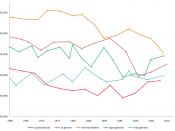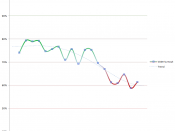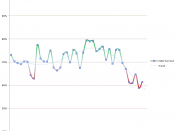Democracy is often said to be a form of government in which the population as a whole chooses between public policies or among those who wish to handle the authority of the state. Therefore, the process by which the people of a society decide who will occupy political offices in a democracy is a central element in how their society will work. This process is known as the electoral system and because of their importance in liberal democracies, electoral systems have frequently been the focus of intense scholarly debate. Electoral reform in Canada has been a main focus of these debates and "proportional representation (PR) is currently proposed as a solution to a large number of the country's ills" (Fitzgerald, 2001, 49). There clearly are many advantages for a country to adopt a PR system, however, in Canada, the adoption of such a system could have potential negative consequences thus making it an unfavorable system to adopt.
First, this essay will take a detailed look at Canada's electoral system today, illustrate the problems it has produced, and give a brief outline of the PR system. Secondly, the advantages of adopting such a system in Canada will follow. Finally, this paper will look at the arguments of those opposed to the PR system, and eventually determine whether or not such a system can work for Canada.
1. Canada's Electoral System and the Need for Reform
1.1 Canada's Electoral System
The first-past-the-post (FPTP), single member district electoral system is Canada's present electoral system, and is believed to have produced a startling record of distortion, misrepresentation, and impaired governance in Canadian federal elections. In an article written in 1968, Alan Cairns documented many of the distortions that the Canadian electoral system has produced over the period from 1921 to 1965, and argued...



Canadian Electoral Reform
This is an outstanding essay--well researched and well written. Although the focus is clearly on Canada, the points made about proportional representation could be applied more generally to other nation's political systems.
7 out of 9 people found this comment useful.